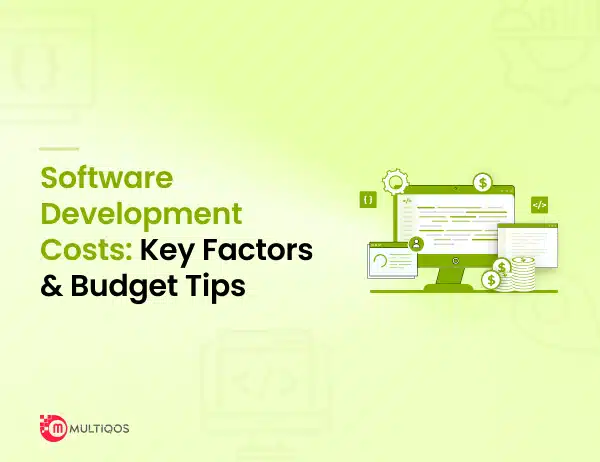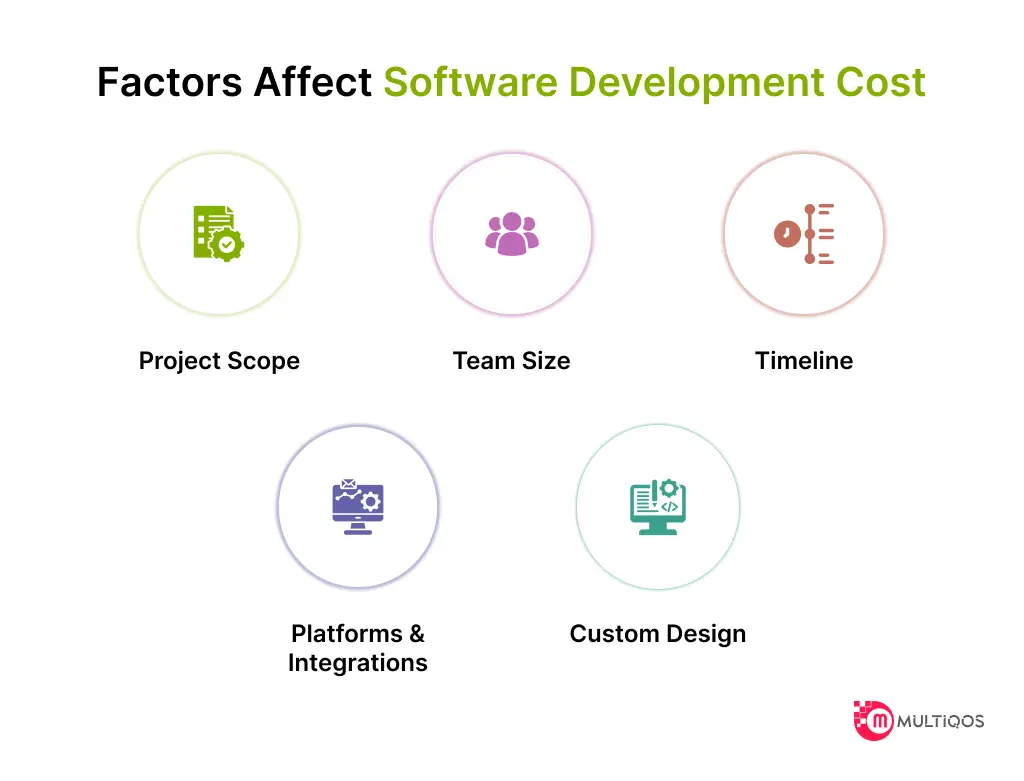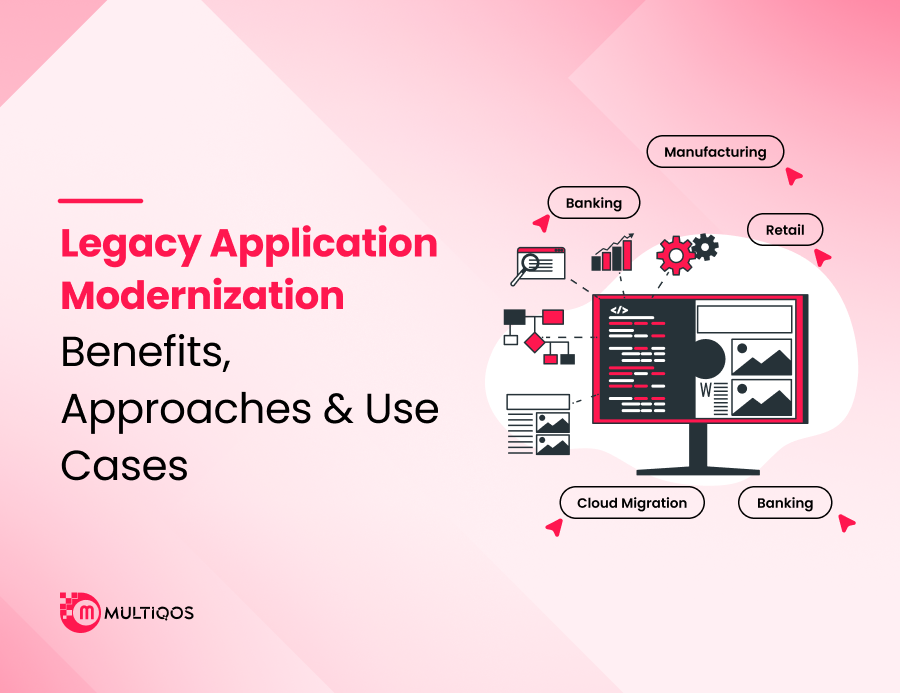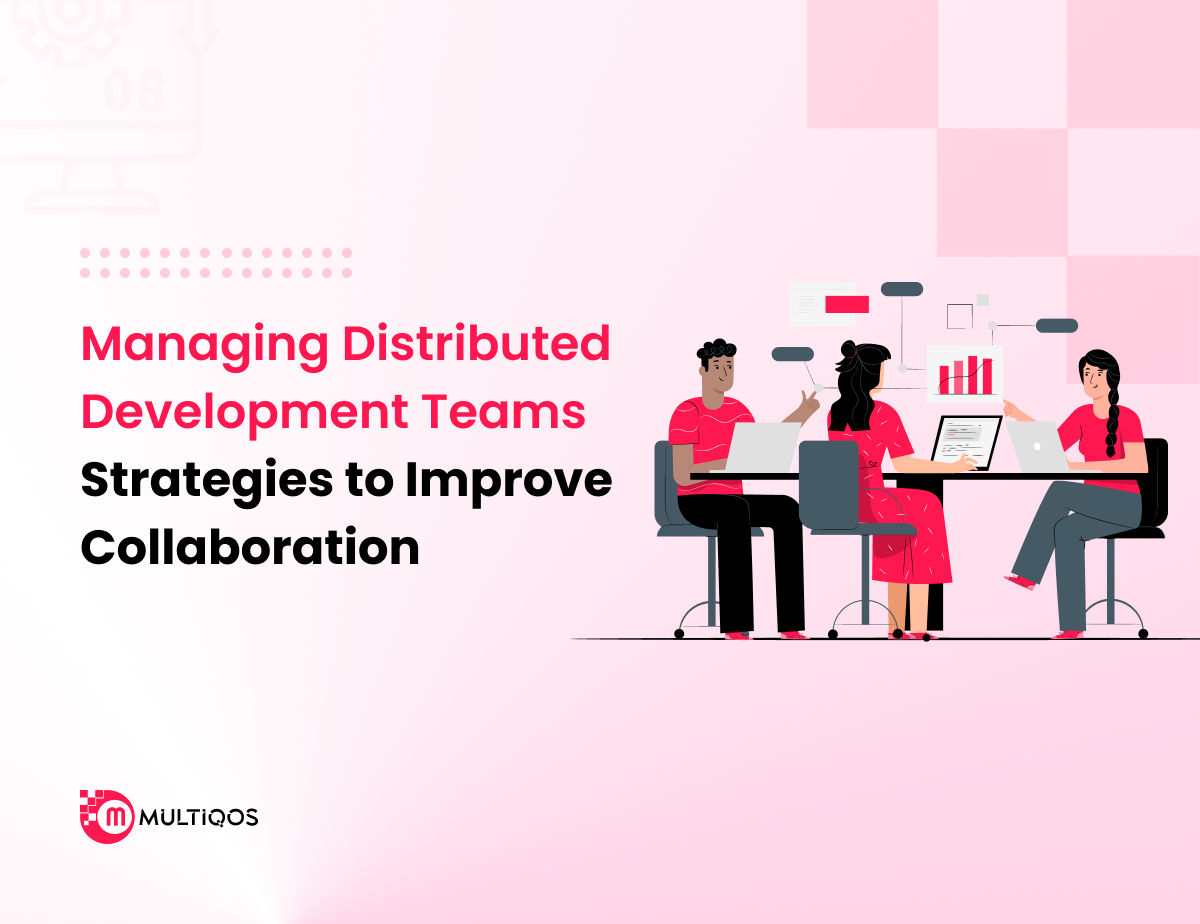Understanding Software Development Costs: A Complete Guide

As a best-customized software development company, we have witnessed that many customers or prospects might come up with this inquiry frequently when we work together on projects “Does this software come with this budget?” While this is a complex question because it is not always a yes or no, I will discuss some of the specifics that may help you.
Becoming familiar with software development costs is a prerequisite for any organizational unit deciding on the implementation of custom software. The software becomes a crucial element for all organizations, hence, it is requisite to have an apt grasp of the budget and expenses. Getting into a new software project without a proper prediction of expenses is not feasible.
Incorrect estimates not only can increase the overall cost and money issues but also can put the whole success of the venture at risk. This in-depth guide will shed light on how to build custom software solutions for your specific business needs. It will explore how factors such as project scale, team size, technical complexity, and integration needs can influence the overall project costs.
Readers will acquire practicable tips on cost estimates, hidden costs occurrence, and expenditures maintenance during all the development stages. You may be a project manager, CTO, or business owner; no matter what, this guide covers the basics, and you will have the ability to set realistic budgets and ensure that your software initiatives deliver maximum value.
Estimation of software costs facilitates good decisions to invest in the software and gain the many benefits this customized software may render to your organization.
What is Software Development?
Software development denotes the entire process where one defines, specifies, designs, programs, documents, tests, and corrects faults associated with building and then maintaining various applications, frameworks, or other software components.
Software development is an overall terminology divided into the stages supposed to produce a software product. At the most basic level, software development involves:
- To define the objectives and reach of the software is the one thing to be taken into account.
- It is imperative to indicate what components will be needed and the quantities that will be used for installation.
- Encouraging the creation of the software architectures, interface, as well as components.
- Writing the code.
- Besides, thoroughly testing the product for bugs and errors is another important aspect of it.
- It is desirable to launch the software and keep it after the dispatch of the program.
Software development methodologies change with time, yet typically resemble some version of the planning, designing, building, testing, and deployment process. The software development life cycle provides the means for the systematic management of the projects and the achievement of the desired results.
One may encounter various software development life cycle models, such as waterfall, iterative, spiral, and agile. Each technique is different and has its advantages and disadvantages, and software developers select the methods based on the design of the software.
The products that are developed from it can include web apps, mobile apps, desktop applications, embedded software, firmware, databases, APIs, frameworks, operating systems, and much more. The development of software comprises not merely building new software products but also maintaining and improving existing software.
How Much Does Custom Software Development Cost?
The cost of custom software development may fluctuate widely depending on the scope and complexity of the project. Here’s a high-level overview of typical cost ranges:
- Basic mobile apps now start at $5,000-$50K.
- Even the simplest websites could be between $10,000 – $75,000.
- Business software with more complicated abilities can be priced between $15,000 and $250,000.
- Business software or systems can be worth $100,000 regardless of their type.
Low-budget mobile apps or websites requiring simple solutions can have an average cost of $10,000 to $75,000. In proportion to the increasing levels of functions and technology, the costs will be high as well.
Capable web apps with great ability and functionality could be $50,000 to $250,000+. The singular purpose of some enterprise systems, which integrate with various apps and can range from $100,000 to a million dollars.
By the way, it should be kept in mind that these ranges are quite rough (more like estimates) only. The exact cost of a custom software project may vary, depending on factors such as the size of the project, required features, complexity level, number of teams involved, and a time frame.
Though in general functionality is linked to growing costs, there could be various functions, integrations, data, security, custom designs, and other complexities involved.
What Factors Affect Software Development Cost?
Many factors impact the overall cost of custom software development. Some of the key factors include:
Project Scope
The scope of the project is considered the most influential factor in the cost. The cost of the development depends on the number of features, integrations, platforms, and complexity involved. Having MVP (a minimum viable product) defined and planning a clear roadmap can be useful for containing costs.
Team Size
This development team’s size is proportional to the budget costs involved. The higher number of team members leads to the costs of labor to increase. Different developers have different levels of skill and experience which lead to different rates of development.
Timeline
The faster the turnout time the more money we spend. Stretching the development time requires an army of developers to meet short-term deadlines.
Platforms and Integrations
The decision depends on the number of platforms, databases, APIs, and integrated third-party applications required which may affect complexity. This would lead to more platforms and it means more development and testing as well.
Custom Design
Rather than using generic templates, which is more expensive than using a special system that has been specifically made for the product. Unique designs are more difficult and time-consuming to manufacture.
Testing and Quality Assurance
We perform testing & QA a lot and it has a direct impact on costs. Tougher testing takes more hours and involves the engagement of additional QA personnel. Use our advanced AI to create unique and humanized content for your website.
Take into account possible maintenance, support, and development work that will be required after the project launch during the design stage.
Often, such teams as offshore development are remarkably cheaper than those located in countries of origin due to lower salaries there. On the other hand, the communication overhead should be kept in check.
It is imperative to thoroughly assess all cost components in advance, scope the project, and create phased deliverables to ensure the accuracy of estimates and control expenses in the custom software development process.
Key Tips to Accurately Estimating Custom Software Development Costs
Assessing the cost of custom software development is an important part of every project. To ensure accuracy and avoid budget overruns, examine the following critical points:
- As the first step, it is necessary to identify product requirements. Detailed and concrete requirements will allow you to make a more precise estimate. After a certain time, further expenses are to be expected.
- Split the project into short and attainable components. Evaluate each component individually and finally, add them to the total.
- Include integration testing and bug fixing in the plan. People do not pay attention to these stages that take quite long though. Allocate at least 25% of development time for testing.
- Think also of the infrastructure necessities like servers, databases, security, hosting, etc. These can be major cost drivers if you forget to include them in your costs.
- Predict a range, not a single number. Give lower and higher estimates to take into account unknowns. Ask the team for help to confirm the estimates.
- Pad estimates, especially for new features and technology. It’s always better when there is the assumption that you will be delivering early than when you will be delivering late. Provide 10-30% extra padding, based on complexity.
- Build prototypes and POCs for complex or new features to better understand them. These will help to uncover the pitfalls and missing details from the first appraisal.
- Frequently reassess the plan as the project advances accordingly. Changes and modifications will be made to these requirements and estimates as more information is acquired during the process.
- Historical data from a parent project can be used to base estimates. Include some examples of previous projects and actual data vs estimates
- Use estimation models such as function points, and commonly use estimating software. Models offer a systematic approach to adaptation and adjustment.
- Utilizing the structured approach to estimations based on lessons learned from previous projects will allow providing reliable software development expenses.
Hidden Costs of Custom Software Development
A lot of companies do not calculate hidden costs while making budget plans for the custom software development project. Apart from the initial outlay for the setup, there remain continuous expenses required for the software maintenance and subsequent optimizations. Here are some of the hidden costs to be aware of:
- Maintenance and Support – However, after software building, some maintenance and support costs will be involved concerning bug fixing, troubleshooting problems, and answering user’s questions. Usually, the range is 15-30% of the initial dev costs incurred annually.
- Hosting and Infrastructure – Continuous hosting, server, and infrastructure costs will be necessary for the software to be used. Data hosting and storage costs would ride in a wave of traffic patterns and data storage demands.
- Testing and Quality Assurance – The development team would have to undertake extensive testing at each development stage, including each product update and the launch of new features. The budget should include automated testing tools and manual QA testing.
- Security and Compliance – Security measures such as penetration testing, SSL certificates, and compliance audits must be put in place, especially for software used in sensitive areas. These could be even tens of thousands per year.
- Integration & API Charges – When integrating with 3rd parties, you have to consider their API costs, data charges, and maintenance expenses.
- Continual Training – Training programmers on the new technology and regular updates for users often is neglected. Nevertheless, this setup makes sure that the software is adopted and used optimally.
- Scaling and Performance – It would come as the software use and data grows the cost increases for scaling hosting, bandwidth, storage, and computing capacity to maintain performance.
Proactive assessment of such hidden costs will thus prevent unexpected budget overruns behind the scenes. Work in close collaboration with your development team to predict future maintenance, optimization, and expansion expenditures.
Strategies for Reducing the Price of Software Development
There are several effective strategies for minimizing software development costs without compromising on quality:
- Develop an MVP first: Give priority to MVP creation that has the basic features that allow the product to perform basic functions and validate the core assumptions. Gather user feedback and improve version by version. This way users will get only essential features avoiding unnecessary complications.
- Use agile development: Agile approaches including Scrum emphasize iterative development, early feedback, and ongoing changes. This cuts down on the waste and a product should be made which should serve the needs of the users.
- Prioritize features carefully: To rank features by the value they bring to users and business goals. Initially develop high-value features to deliver to your users the functionality that will most inspire their appreciation. It’s better to postpone them for later.
- Outsource intelligently: Outsourcing development is always cheaper if it is performed by a team who are qualified and situated offshore. Leverage your in-house team for product strategy and outsource to development partners for execution.
- Automate testing: The use of test automation such as unit, integration, and UI testing reduces the workload on QA teams and saves time. Choose test-driven development for quicker feedback.
- Re-use code and frameworks: Utilize existing libraries, components, and frameworks if possible and only create from scratch when necessary Thus, makes the process easier.
- Optimize processes: Use lean or Six Sigma principles to rationalize development and management processes. Discard useless activities and concentrate on profitable things.
- Negotiate deals with suppliers: Enlarge your bargaining power in the process of buying tools, infrastructure, and services that are crucial to the development process. Employ open-source and cloud-based solutions.
- Control scope creep: Need to enforce proper change control processes for new feature requests. Prevent scope creep that consequently causes unplanned cost escalations.
Calculating Custom Software Development Cost at MultiQoS
Custom software development is a highly valued service that is offered by numerous respectable software development companies. At MultiQoS, we realize the significance of offering cost-effective solutions to our clients, ensuring that they get a return on investment.
Our software development services are configured to address the particular needs and requirements of our clients. We collaborate with them to identify their objectives, the problems they face, and the results they desire.
This flexible approach enables us to design tailored software that resolves specialized problems and brings real value to end-users.
The cost of custom software development from MultiQoS is determined by multiple factors. Such factors may include the scope of the project, the technology stack required, the number of features & functionalities developed, and the time required for development among others.
As part of our robust estimation process, we present comprehensive cost estimates with detailed explanations, which allows our customers to be more knowledgeable. Taking into account the industry standards and applying innovative technologies, we work on the projects of custom software and realize them on time and within budget.
Transparency and clear communication are essential at MultiQoS; therefore clients are kept informed of the changes during the development process. We continually communicate current project results as well as milestones and feedback sessions, to clients so they never miss any step of the project or the associated costs.
Quite a transparent pricing, optimal development methodologies, and determination to get a quality lead our team to successful software enterprises. We believe in long-term partnerships with our clients to provide software solutions that can foster their business competitiveness.
Get on a completely free call with our experts and discuss your project with them to get a free rate estimate.
FAQ on Software Development Cost
The transparency and accountability of software development cost management can be ensured through the establishment of clear and regular project milestones and deliverables, open communication channels with the development team, frequent updates on the project progress and budget consumption, and consistent documentation of all changes and scope adjustments to see how they influence the overall spending.
The payment terms for custom development at MultiQoS are designed to be flexible as well as congruent with the needs of each client. Milestones are usually the basis for our remuneration structure. In this case, payments depend on specific project milestones or deliverables, providing clarity, and clients are supposed to give for the work done.
The timeframe for payment is either defined in the contract or agreed upon through negotiation before the project commences. We appreciate the necessity of keeping a business’s cash flow stable for our clients and endeavor to prepare payment schedules that avail of the convenience of their financial capabilities.
We, as a team, always engage with clients to define early-stage payment terms and milestones that are clear and provide transparency and simplicity with no surprises for the client till the end of our customized computer solutions provision.
If the software is tailor-made to meet the specific needs of the company, it will be cost-effective in the long run. In the beginning, the custom software cost might be higher than the price of the off-the-shelf software. There are, however, several advantages that come with a long-term perspective on custom software. These include:
- Scalability: Off-the-shelf software has to be implemented in your business strategy as it is, but can’t be easily customized and adapted to your growing needs, requiring substantial outlays for the purchase of new software if your business expands.
- Increased efficiency: In this case, custom software is intended to overcome this issue through the use of technology to streamline and automate processes, which eventually lead to greater efficiency and higher cost savings in the long run.
- Competitive advantage: The business’s unique advantages can be given by custom software as it provides specific requirements and features that are well-tailored to align with your needs.
- Lower maintenance costs: Custom software is built to conquer your needs for process re-engineering and rarely the need for configuration and updates that are usually characteristic of over-the-shelf software.
- Enhanced security: The customized software may offer a comprehensive security option that is aligned with your business standards. It is more secure than in most cases in protecting against potential security threats or vulnerabilities.
It is necessary to assess the contextual peculiarities of your business as well as the goals your organization is going to achieve to find the answers to how long-term cost-efficiency of custom software development can be gained.
Yes, at MultiQoS we also prepare and send cost proposals (estimates) for personalized software development projects. Our estimation procedure drills down into the key components of the project – scope, complexity, technology stack, and required resources.
To define exact pricing, we provide thorough discussions with clients to learn and comprehend their needs. Then our engineers review the plans and make a comprehensive plan that also has the breakdown of estimated cost.
We believe in transparency and make our efforts to ensure that our clients receive accurate and elaborate cost estimates which help them to plan their budgets correctly. Throughout the construction process, the client and our team work together closely, and we ensure to inform them of any changes to the cost estimate with regular updates. This way, there are no surprises.
The choice of a technology stack may be one of the crucial factors which affect the overall costs. These are the factors like licensing fees, developer expertise availability, scalability, maintenance as well as the need for future upgrades.
Get In Touch







